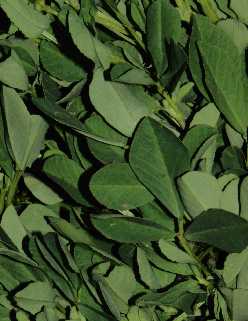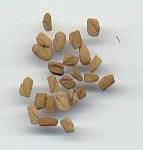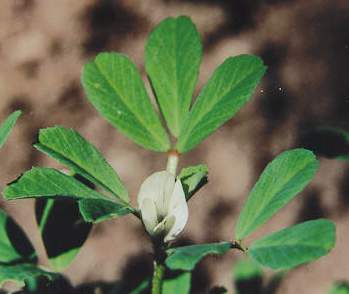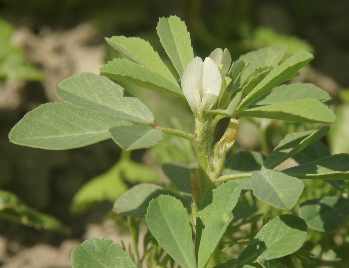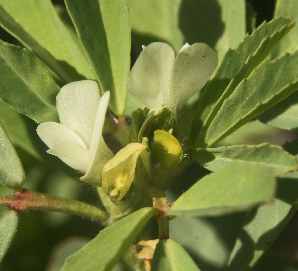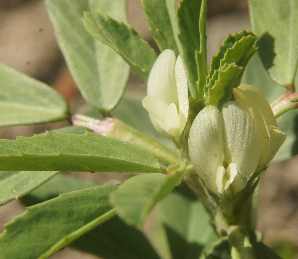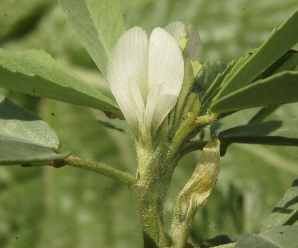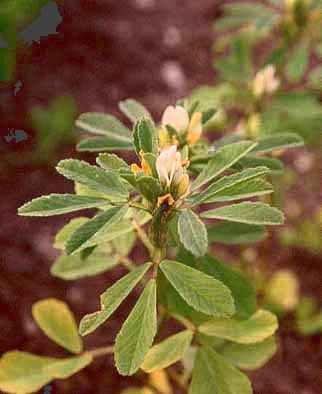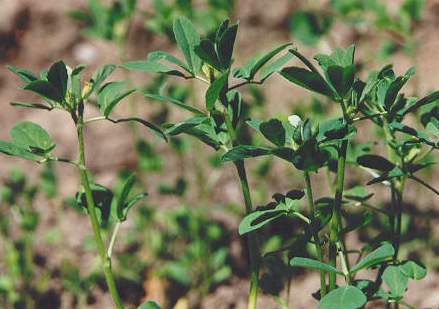
|
| Fenugreek plants |
Fenugreek is an ancient spice, although currently not
much known in the West; it has been grown as a medicinal plant in Europe during
the Middle Ages (see also lovage). Today, many
people in Western countries seem to dislike its flavour, which they claim to be
goaty
and bitter. It is now mostly used in the West, Central
and South Asia; in India, it is popular
for pickles. Dry toasting can enhance the flavour and
reduce the bitterness, provided care is taken not to overheat the seeds.
Fenugreek leaves are an important spice from Central Asia to Northern India; in Northern India, they are sometimes found in the typical yeast bread naan (then called methi naan [मेथी नान]); also, the leaves are often used as a flavouring for potato curries (alu methi [आलू मेथी]). They me be used fresh, but dried and soaked leaves actually give superior flavour.
Iran has a particularly rich tradition in cooking with fenugreek leaves; among the most famous examples is ghorme sabzi [قرمه سبزی], a thick sauce made from fresh or dried vegetables (leek, onion, occasionally beans) and herbs (fenugreek, parsley, mint; some recipes also call for chives and coriander leaves). The sauce acquires a characteristic acidic flavour by addition of dried limes. Khoreshte ghorme sabzi [خورشت قرمه سبزی] is mutton slowly stewed in this aromatic herb sauce.
The more important spice, however, is fenugreek seeds, which is used in a much larger area, and whose use is more general, not restricted to specific dishes.
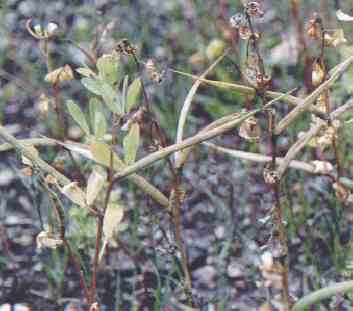
|
| Fenugreek (plants with ripening fruits). Note the long pods! |
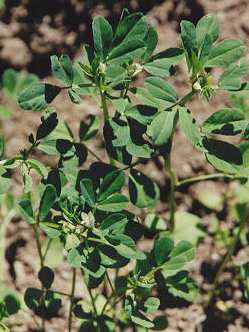
|
| Fenugreek plant |
While Western Asia is generally not too fond of fenugreek (the closely related blue fenugreek, however, is much used in Georgia), the spice is known and valued in the Red Sea region, where it has a long history: Egyptian papyri mention the plant as one necessary for the mummification process. The Ethiopian spice mixture berbere (see long pepper) contains small amounts of fenugreek. Yemeni cooking shows a particularly strong inclination towards fenugreek, as the national sauce hilbeh consists mainly of fenugreek seeds and chiles; that recipe has also found many friends in Israel.
In most of India, especially the south, fenugreek seeds are indispensable; they are usually toasted and ground with other spices to give countless spice blends, or fried in oil to improve its flavour. The use of drief fenugreek leaves, however, is restricted to the North; they are a minor spice, sometimes used in flavouring spicy chickpea curries, which are known by the Anglo–Indian name dal fry [दाल फ्राई]. In the North, also the fresh leaves are used in cooking, but these are a green vegetable, not a herb or spice.
Small amounts of fenugreek seeds should be found in any good curry powders
(see curry leaves). Fenugreek is also popular in
the South of India and appears in the ubiquitous Tamil spice mixture sambar podi (see coriander). Lastly,
the bitter–aromatic seeds constitute an essential part of the Bengali five
spice
mixture panch phoron (see nigella).

|
| Fenugreek plant with unripe fruits |
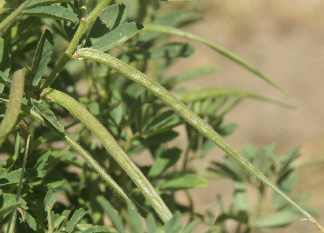
|
| Fenugreek pods |
As a general rule, South India has its spices toasted to a darker colour and flavour than the North; yet the darkest fenugreek seeds ever I encountered near the Northern edge of the Indian subcontinent. Newari cooking, located in the Kathmandu valley of Nepal, is famous for a number of spicy snacks rich in fresh garlic (see there for more) and dried chiles. Some of the vegetable salads are sprinkled with fenugrek seeds that are no longer brown but plainly black due to excessive toasting. Yet in these extremely spicy, salty and acidic salads, the burnt and bitter flavour actually provides an interesting contrast, for example in achar [आचार] (hot and sour salad from bean sprouts and julienned cucumber and carrot) and also in the highly spiced, pan-fried version of kochila [कोचिला] (ground buffalo meat which can also be eaten either raw with garlic). Newari cooking also employs fenugreek sprouts which can occur as a component in achar, or eaten as a soup.
Also, cooks in Sri Lanka make use of fenugreek seeds, e. g. as a component in curry powders (see curry leaves for more). Usually, they are toasted and ground, yet the Sri Lankan food richest in fenugreek is an exception to this: Kirihodi [කිරිහොදි] is a soupy dish made from cow milk or coconut milk with a few vegetables and a thick sediment of fenugreek seeds; is is lightly flavoured with curry and pandanus leaves, turmeric and a few cinnamon bark fragments, and is eaten mixed with rice, like any other curry.
The wide-spread popularity of this bitter spice may surprise Western cooks;
although bitterness arises unpleasant associations in most people, culinary
use of bitter taste is a theme found all over the globe. Of the spices discussed
on this page, many have a more or less significantly bitter character.
See zedoary for more on that topic.
